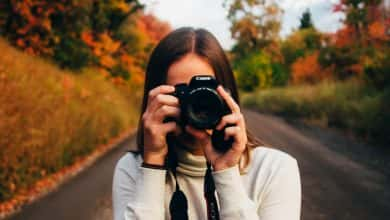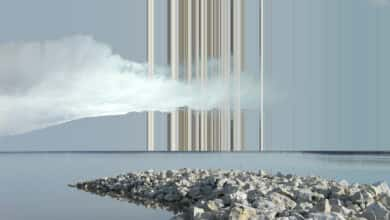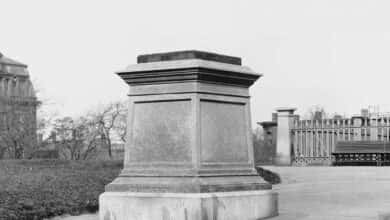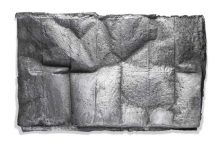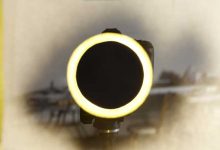Palazzo De’ Toschi
from 29/01/2019 to 24/02/2019, opening: Thursday and Friday, 3 PM – 7 PM. Saturday and Sunday, 11 AM – 6 PM. Closed Mondays, Tuesdays, and Wednesdays
For the fourth year in a row, Banca di Bologna will continue its exploration of contemporary art by presenting an exhibition of international scope in conjunction with Arte Fiera.
In 2019, the Banca di Bologna Hall at Palazzo De’ Toschi will be housing the first solo exhibition in Italy by Belgian photographer and videomaker Geert Goiris (born 1971 in Bornem, Belgium, based in Antwerp), whose works have been shown by prestigious museums around Europe.
 The show will open on Tuesday, January 29 at 6:30 pm as part of ART CITY Bologna—a program of high-profile exhibition projects selected by the City of Bologna and by BolognaFiere to accompany Arte Fiera.
The show will open on Tuesday, January 29 at 6:30 pm as part of ART CITY Bologna—a program of high-profile exhibition projects selected by the City of Bologna and by BolognaFiere to accompany Arte Fiera.
This will also mark a continuation of the partnership with Bologna’s Accademia di Belle Arti: students from the academy’s Art Education and Cultural Facilitation course will be on hand as guides for the duration of the show.
The exhibition – which will include a selection of photographic prints in different formats, an analogue slide show, and a multichannel video installation – will feature an ambitious, innovative design conceived for the occasion by architect Kris Kimpe, the artist’s longtime collaborator. The large space will be filled with hexagonal display units, some of them closed, others open and accessible, each housing photographs or moving images on its walls. The irregularly arranged modules offer a full-immersion experience, yet allow visitors to choose their own path through the show.
This exhibition in Bologna is closely linked to Goiris’s solo show at the Royal Academy of Fine Arts in Antwerp, scheduled for November and December 2018. The artist developed them parallel to each other, creating two mirror-image projects in which many of the works are the same—yet appear completely different in each space, underscoring its unique qualities.
 The title, Terraforming Fantasies, is borrowed from the video installation in the show. ”Terraforming” is a recent coinage mostly used in speculations about the future of our species, and describes the possibility of chemically altering the atmosphere of other planets to make them resemble Earth and support human life. It is an idea that for the moment seems like science fiction, but its tacit assumption can be easily guessed: the ambition to colonize other planets reveals a deep unease about the health of our own, given the threat of ecological disaster. As Goiris explains, “It is misleading to think about terraforming at this stage. In itself it’s an interesting concept, but we absolutely lack the technology and resources to actually do it (let alone the morality). However, dreaming about it is very human: ambitious and at the same time tragically remote.” The exhibit design is also connected to this theme: “The display concept brings a constellation of extraneous objects into the space. It is, to some degree, out of place, a form of colonization. My intention (and hope) is for it to also say something about human characteristics such as wonder, curiosity, perplexity, and so on. By carefully selecting the images and presenting them in a carefully chosen setting, I’m trying to plunge viewers into a parallel world, one that may resemble our own, but does not completely match up with it.”
The title, Terraforming Fantasies, is borrowed from the video installation in the show. ”Terraforming” is a recent coinage mostly used in speculations about the future of our species, and describes the possibility of chemically altering the atmosphere of other planets to make them resemble Earth and support human life. It is an idea that for the moment seems like science fiction, but its tacit assumption can be easily guessed: the ambition to colonize other planets reveals a deep unease about the health of our own, given the threat of ecological disaster. As Goiris explains, “It is misleading to think about terraforming at this stage. In itself it’s an interesting concept, but we absolutely lack the technology and resources to actually do it (let alone the morality). However, dreaming about it is very human: ambitious and at the same time tragically remote.” The exhibit design is also connected to this theme: “The display concept brings a constellation of extraneous objects into the space. It is, to some degree, out of place, a form of colonization. My intention (and hope) is for it to also say something about human characteristics such as wonder, curiosity, perplexity, and so on. By carefully selecting the images and presenting them in a carefully chosen setting, I’m trying to plunge viewers into a parallel world, one that may resemble our own, but does not completely match up with it.”
Though it sometimes includes interiors and the human figure, Geert Goiris’s work in photography and video is focused above all on the landscape. Whether his locations are far-flung (ranging from the Antarctic to the Danakil Desert in Ethiopia) or closer to home, Goiris makes them look uncannily suspended, as if they came from another planet. This is achieved though specific technical and stylistic choices: the artist primarily uses a large-format camera with special types of film (orthochromatic, aerial, infrared). He shoots most of his pictures at dusk, when the light is beginning to fade and become unreliable. His working method is a blend of preparation and chance: Goiris uses the camera with the precision of a weathered professional, but during the long exhibition times that he favors, anything can happen, and there is no way to predict exactly how the film will transform the subject into an image. The camera is never a mere conduit through which we can visually connect with the outside world, but a tool for exploring the gap between our “experience” of it and the act of seeing it for what it is. Like the French philosopher and photographer Jean Baudrillard, Goiris seems to understand that the camera is on the side of the world, offering us a glimpse of what it looks like stripped of every human projection or interference. In this artist’s images, the ambiguous, disquieting feeling that the Romantics dubbed the “Sublime” arises not from the terrifying grandeur of the site, or the threat that seems to loom over the landscape. It stems from the distinct feeling that we are cut off from any genuine connection with the world.


